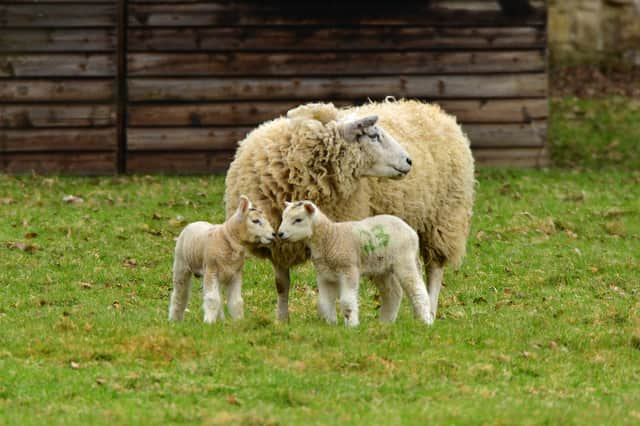Lamb prices set to dip this year after a Brexit high point


Putting the price hike through spring down to the topsy-turvy sale pattern of lamb last season – with far more animals being slaughtered in the June to December period in order to avoid the risks associated with a possible no deal on Brexit – they pointed out that throughput fell almost ten per cent during the first quarter of 2021.
Iain Macdonald, QMS senior economics analyst, said that, despite last year’s smaller lamb crop across GB, the number of prime sheep slaughtered pre-Christmas actually rose as producers sold before the Brexit transition period ended.
Advertisement
Hide AdAdvertisement
Hide Ad“And as a result, with fewer hoggs carried over, slaughter numbers then fell 10 per cent year-on-year in January to March 2021,” he said.
But with much of this year’s lamb crop now on the ground there is no guarantee that next spring will see similarly high prices – and Macdonald hazarded that another factor limiting the number of animals being slaughtered in spring was a greater retention of ewe hogs for breeding, driven by the strong prime and store sale values.
“This has seen a 14 per cent surge in lambs put to the tup in Scotland.”
The sharp reduction in ewe slaughter of 15 per cent at GB abattoirs in 2020 also pointed to increased retention rates, with AHDB analyst, Charlie Reeve stating that with 27 per cent fewer ewes sold for meat during the early months of this year, there was speculation that more ewes were also being kept on for breeding due to the high farmgate prices seen during spring.
QMS’s Macdonald added that in Scotland, the December census figures suggested a small increase in the breeding flock, with an estimated 0.8 per cent more breeding ewes on farm at the end of 2020.
But he said that the cold dry spring across GB could also have an influence on how the lamb crop was marketed over the coming season. With little grass available, he believed it was likely that lambs, especially those on the hills, would grow more slowly than last summer – meaning they could take longer to reach market weight, although he admitted that if the grass did begin to grow, this could quickly change over June and July.
*The increase in the number of young breeding stock was borne out by hill farmers claiming more ewe hoggs under the Scottish Upland Sheep Support Scheme (SUSSS).
With payments under the scheme set to start today, there will be a small fall in the rate received as numbers of eligible animals claimed has increased.
Advertisement
Hide AdAdvertisement
Hide AdWelcoming the prompt payment, NFU Scotland said that hill farmers would see individual payment rates of £59.80 per eligible ewe hogg, which was down £2.56 a head from last year’s £62.36 per animal.
NFU Scotland's LFA committee chairman Robert Macdonald said the SUSSS scheme remained a vital support stream for hill farmers and crofters.
Comments
Want to join the conversation? Please or to comment on this article.